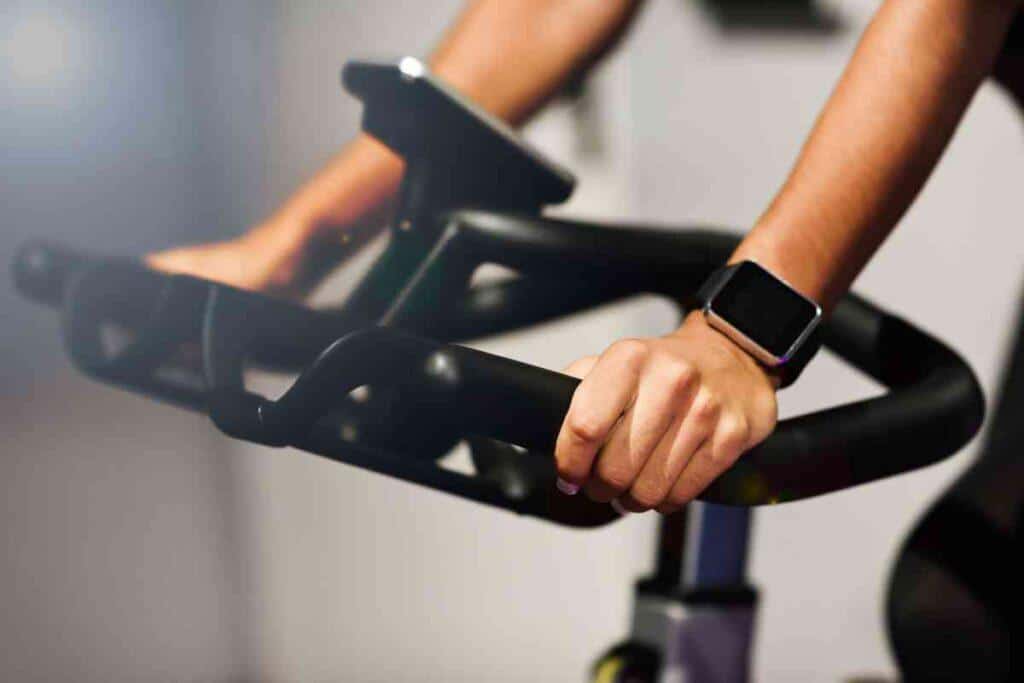Fitbit Says Your Burning Too Many Calories? Solved!
It’s a great feeling when your Fitbit tells you that you’ve burned a lot of calories for the day.

Why Is Fitbit Overestimating My Calories Burned?
There could be a few reasons why your Fitbit is overestimating your calorie expenditure, including wrong activity settings selected, an inaccurate account for the intensity of your activities, and an inaccurate Fitbit algorithm.
As a fitness enthusiast, I own several fitness equipment and gadgets and found that my Fitbit recorded more calories burned than my other gadgets.
After a little digging around, here is what I found out.
Why Do I Burn So Many Calories On Fitbit?

It’s no surprise that Fitbit is one of the best-selling fitness trackers on the market.
One of its main features, calorie tracking, can be very helpful in understanding our body’s caloric needs and usage as we strive towards better health and wellness. But why do some people seem to burn so many calories with their Fitbits?
The answer lies in how Fitbit calculates calorie burn.
To begin with, it collects data such as age, height, weight, gender, and activity levels from users to gauge a base metabolic rate (BMR).
This BMR represents the number of calories you would expend each day if your physical activities were minimal – just enough to support essential bodily functions like breathing and digestion.
Now comes the tricky part: activity tracking. Fitbit keeps track of your movements throughout the day and uses this data to calculate an “active metabolic rate” (AMR), which considers any additional physical activities you have done above essential bodily functions.
Activities like walking, running, cycling, swimming, and even cleaning the house can add to your overall calorie burn count.
On top of that, Fitbit also has a ” SmartTrack ” feature that automatically detects when you’ve been active for at least 10 minutes and logs it as exercise.
This means if you fail to log every single one of your physical activities manually, Fitbit will still be able to give you a fairly accurate calorie burn estimate based on what it has detected in the background.
Finally, Fitbit also monitors your heart rate and intensity levels during exercise to give a more precise estimate of calorie burn. The higher the intensity, the more calories you’ll be burning–so if you’re pushing yourself hard at the gym, expect to see that number skyrocket!
Fitbit then uses all this data to calculate the calories burned throughout the day. This means that even if you don’t feel like you’ve done any particularly strenuous activities, there are still plenty of small ways to boost your overall calorie burn, such as taking regular walks or doing housework.
So if you consistently see a high number on your Fitbit calorie burn, that likely means you’re staying active and healthy!

Is Fitbit Accurate For Calories Burned?
The answer is not so cut and dry when assessing the accuracy of Fitbit’s calorie tracking.
While most models of Fitbit provide relatively reliable estimates of your caloric burn, exact numbers can be challenging to assess accurately due to many factors.
Different Body And Activity Levels
Everyone’s body and activity levels are different.
All wearable trackers use algorithms based on a general population average and do not account for individual body composition, lifestyle, or metabolic rate — all of which can impact how many calories an individual burns in any given situation.
For example, a person with low body fat may need more energy expenditure (calories burned) than someone with a higher fat mass percentage.
Inaccuracy of Determining The Type of Activity
Fitness trackers may not accurately account for the type of activity you are performing and how much effort is involved.
For instance, two people may be running at a given pace, but one person may have less body fat than the other, resulting in different caloric burns despite their equal level of exertion.

Model
Fitbit’s calorie tracking accuracy can also depend on the model being used since some devices are more advanced than others regarding tracking energy expenditure.
Higher-end models tend to be more accurate as they often include accelerometers, altimeters, and heart rate trackers that help provide a better picture of your overall fitness and caloric burn.
All of these factors come together to show that while Fitbit can give you an idea of how many calories you burn during exercise, its accuracy can be impacted by several factors.
When looking to get the most accurate tracking possible, combining your Fitbit results with other methods, such as using an activity monitor or heart rate monitor while working out.
This will help give you a better idea of exactly how much energy you’re expending during any given workout and enable you to make the necessary adjustments to reach your fitness goals.
How Do I Fix Calories Burned On Fitbit?
Fixing calories burned on Fitbit can be done in a few simple steps. First, you will need to access the settings of your device.
This can usually be done by finding and tapping the gear icon on the main screen of your Fitbit.
From there, select “Settings” from the list of options. On the following screen, scroll down until you find “Goals & Activities” and tap it to open its menu.
Once inside this menu, you should see a “Calories Burned” selection at the top of your display. If it is not visible, re-select “Goals & Activities” to bring it up again.
Once selected, you should be able to edit the number of calories you wish your Fitbit to track and record.
Select a number that accurately reflects your lifestyle, as incorrect values could lead to inaccurate readings.
Once you have chosen your desired value, you must save your changes by tapping “Save” at the top right-hand corner of the screen. This will ensure that all future recordings are done with this new setting in mind.
You should also consider resetting all previous data if necessary; this can be done by selecting “Reset Data” from the settings menu or by navigating to “Goals & Activities” again and selecting “Reset All Data” from its options.
Doing this will clear any previously recorded values and allow for clean and accurate new readings.
Now that your calories burned setting is up to date, you can continue tracking your daily activities. Make sure that you check in with the settings periodically to ensure accuracy.
A Fitbit can be a great way to stay on top of healthy habits with the correct settings!
Key Takeaways
- Fitbit counts calories burned throughout the day.
- It collects data, like age, height, weight, and activity levels.
- It uses this data to calculate a base metabolic rate (BMR).
- Fitbit then uses this data to calculate an active metabolic rate.
- Fixing calories burned on Fitbit can be done in a few simple steps.
- The higher the intensity of activity, the more calories you’ll burn.
- Fitbits provide reliable estimates, but there can be inaccuracies.
